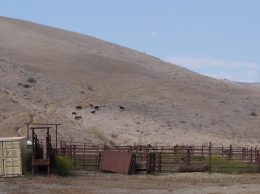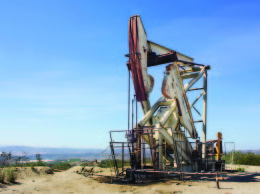
Henry Dubroff
This is a column about two words — water and oil.
And the substantial impact these two words are having on the California economy.
On a drive throughout much of the Highway 101 corridor dodging rainstorms on Dec. 15, I learned a lot about how much the psychology of a return to normal weather is having on the region.
For growers of wine grapes, citrus and berry farmers and even those in the hotel business, the mood is considerably more upbeat than it was a couple of months ago.
That’s not because they are anticipating the end of the drought — Bloomberg News guestimates would take five more extreme deluges to restore reservoirs to normal. My own barometer is that it would take enough rain to flood the floor of the biggest moving van in the Meathead Movers fleet.
What really matters here is that a return to average rainfall puts aside — at least for now — the doomsday scenario feared by top regional economists and agribusiness experts. “If we don’t get enough snow and rain this winter to at least maintain California’s current water positions, Californians could really see some economic pain,” wrote California Lutheran University’s Bill Watkins in a recent report, echoing a common view.
The sudden, 40 percent collapse in oil prices is similarly putting a smile on the face of businesspeople and even some of the most pessimistic forecasters.
Bruce Simon, chief investment officer at City National Rochedale, suggests falling oil prices will put $1,000 extra dollars into the average family’s budget over the next year. Normally dubious about California’s prospects, CLU’s Watkins has issued his most optimistic assessment of the California economy ever, suggesting that the state is headed for a solid 3 percent growth rate on a sustained basis.
That’s due to the benefits of cheaper oil on manufacturing, travel and tourism, the strength of the technology sector and conditioned on a return to normal precipitation patterns.
The declining price of oil and the rise in the dollar, which is a big beneficiary as oil is priced in dollars, are changing the global balance of power in favor of the U.S. With Russia and Venezuela facing a financial calamity, Cuba can no longer count on big subsidies — it has no choice but to work with the U.S. to normalize relations.
(And yes there is the question that if Russia can invade Crimea and get away with it, what is there to stop the U.S. from retaking by force property that Cuba nationalized decades ago?)
Simon, in his report on falling oil prices concludes that a decline in capital expenditures by major oil companies is inevitable. While that may hurt the economies of Texas, Colorado and North Dakota, the economics of lower oil prices are to hand the Central Coast’s anti-fracking advocates the victory they were denied in the ballot box just a month ago, at least temporarily.
It simply is not going to be economic to experiment with getting production out of tough-to-drill Monterey shale formations when the price of oil is in the $50 to $60 per barrel range.
Tom Petrie, a Denver-based energy expert and investment banker wrote in his excellent book “Following Oil,” that energy markets have a way of confounding conventional wisdom — they tend to overshoot the mark going up and going down. And it is easy to underestimate the amount of innovation that can take place to improve production or, in the case of shale, find oil in unconventional places.
Looking to the stock market’s initial response to the turmoil in the energy markets and the collapse of the ruble, it would be easy to conclude that the world was in for a rough economic ride. City National’s Simon says that falling commodity prices aren’t generally good forecasters of recessions.
“The U.S. economy looks stronger than it has been for five years,” he writes.






 Print
Print Email
Email

















